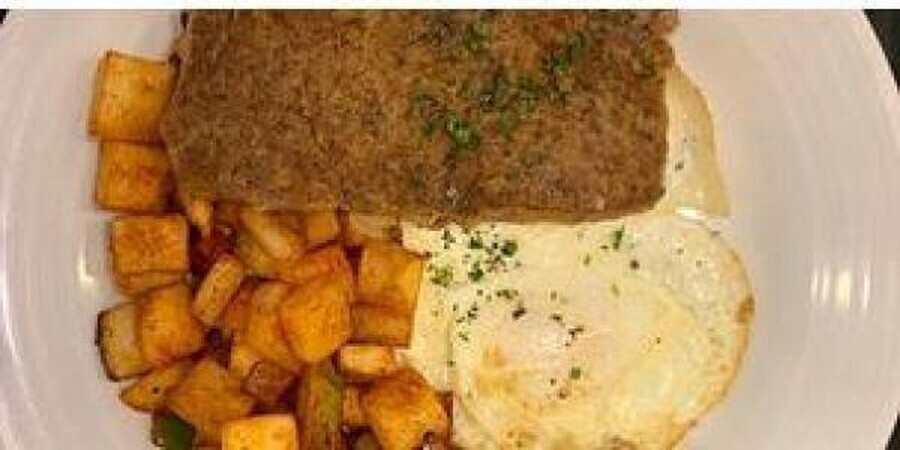Philadelphia, PA
- Scrapple, known as Pannhaas in Pennsylvania Dutch, is a traditional American dish made from leftover pork trimmings and scraps. So, what makes Scrapple so unique?
What is Scrapple? A Guide to Ingredients, Cooking, History & the Best Brands
Scrapple. The name might not immediately conjure up images of culinary delight, but this Pennsylvania Dutch specialty has a devoted following, particularly in the Philadelphia region. This article delves into the world of scrapple, exploring its ingredients, cooking methods, origins, and why it remains a beloved (and sometimes misunderstood) food.
What Is Scrapple?
At its core, scrapple is a savory loaf made from pork scraps, cornmeal, wheat flour, and buckwheat flour, often seasoned with spices. Think of it as a pork-based polenta or a close cousin to livermush (popular in North Carolina) or goetta (found in the Cincinnati area). The texture is typically described as soft and semi-solid, sometimes with a slightly crispy exterior when pan-fried.
Key Ingredients in Traditional Scrapple:
- Pork Scraps: Traditionally, scrapple utilized various pork parts, including offal (organ meats) like the liver, heart, and sometimes head meat, along with trimmings. Modern versions often use more palatable cuts like pork shoulder or hocks.
- Cornmeal: Provides the bulk and texture of the scrapple.
- Wheat Flour & Buckwheat Flour: These flours help bind the mixture and contribute to the overall texture. Buckwheat, in particular, adds a slightly nutty, earthy flavor.
- Spices: The spice blend is crucial and varies by region and recipe. Common spices include sage, black pepper, thyme, savory, and sometimes a touch of nutmeg or allspice.
- Onions
Cooking Scrapple: Pan-Fried Perfection (and Other Methods)
The most popular way to cook scrapple is pan-frying. Here's the classic method:
- Slice: Cut the scrapple loaf into slices, typically 1/4 to 1/2 inch thick. Thinner slices will be crispier.
- Fry: Heat a skillet (cast iron is ideal) over medium heat. Add a small amount of oil or butter (although some scrapple is fatty enough to cook in its own rendered fat).
- Cook: Fry the scrapple slices for several minutes per side, until golden brown and crispy on the outside and heated through.
Alternative Cooking Methods:
- Baking: You can also bake scrapple. Preheat your oven to 350°F (175°C). Place scrapple slices on a baking sheet (lightly greased or sprayed with non-stick spray) and bake for about 20 minutes, flipping halfway through, until heated through and slightly crispy.
- Deep Frying
Serving Suggestions:
Scrapple is often served for breakfast, alongside eggs, toast, or pancakes. It can also be enjoyed as a snack or incorporated into sandwiches. Popular toppings and accompaniments include:
- Maple syrup
- Apple butter
- Ketchup
- Mustard
- Fried eggs
- Provolone cheese
- Cold onion (a classic Philly-area topping)
The Origins of Scrapple: A History of Resourcefulness
Scrapple's roots lie in the resourceful culinary traditions of the Pennsylvania Dutch (German immigrants to Pennsylvania). Similar food traditions existed in England, and the word "scrapple" likely derives from the English word "panhaas" (or variations thereof).
In medieval times, making the most of every part of the pig was essential. Scrapple emerged as a way to use the leftover scraps after butchering. These scraps, including organ meats and trimmings, were boiled with the bones for flavor, then minced and simmered with cornmeal, flour, and spices to create a thick gruel. This mixture was then poured into loaf pans to cool and solidify.
Scrapple Today: Regional Variations and Devoted Fans
While scrapple originated in rural communities, it gained popularity in urban centers like Philadelphia and Baltimore. Today, you can find scrapple in grocery stores throughout the Mid-Atlantic region, and it remains a staple in many Pennsylvania Dutch households.
Scrapple has a devoted following, with "diehards" who are passionate about specific brands, ingredients, and serving styles. Regional variations exist, with some recipes including more organ meats, different spice blends, or varying ratios of cornmeal to flour.


